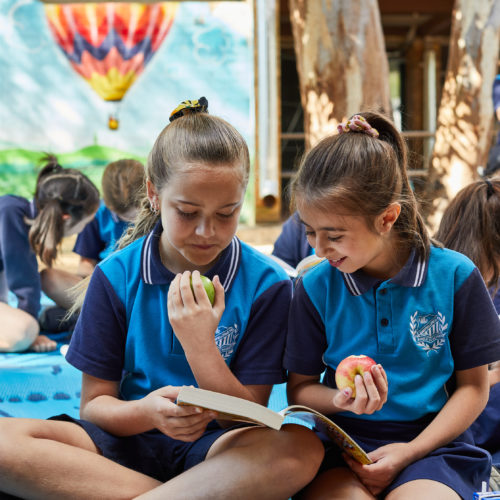The Early Language and Literacy Developmental Index (ELLDI) describes a child’s early language and literacy learning journey across the ages 2 ½ to 8 years. It provides adults with immediate and reliable feedback about children’s learning needs over the seven key subdomains of early language and literacy development, so that they can ensure that the learning opportunities that they provide are giving those children the best opportunity.
The ELLDI is a robust, accessible, formative assessment tool that can be used by a range of practitioners – early childhood educators, early years and school teachers, support staff, allied health professional and more – to receive:
a) real-time feedback about children’s early language and literacy development; and
b) targeted recommendations on integrating learning into everyday activities to extend their early language and literacy growth.
Educators engage with the digital ELLDI platform, which provides automatic scoring. Children respond to questions about engaging, real life picture books and illustrations in hard copy form.
The digital ELLDI platform is ready now for early childhood educators and teachers, with information available in real-time to immediately respond to children’s needs.
Underpinned by a robust progression scale, the ELLDI is a statistically valid and reliable state- of-the-art instrument. It is world unique in that it provides an empirical, evidenced based approach to assessing and intervening in early childhood language and literacy – before children start school.
The ELLDI was announced as Winner at the World Summit Awards. ALNF was selected out of 466 nominees from over 100 UN member states and won in the category of “Learning & Education”.
It was developed in collaboration with the Australian Council for Educational Research (ACER) as part of a comprehensive five-year independent evaluation of ALNF’s EL&L Program (the ODEC Study) on the Mid-North Coast of NSW.
Critically, the ELLDI has been proven to be sensitive to young children with highly challenged oral language and early literacy experiences, with the ELLDI Scale validated against major Australian and international datasets (LLANS, MELQO and MODEL).
“[The ELLDI has been found to] validly measure language and literacy constructs, … produce consistent and valid results… and accurately measures and allows for the mapping of language and literacy components.. onto a scale of difficulty.” (ODEC Final Report, p111)
The purpose of the ELLDI and its associated guides are to:
Importantly, the ELLDI enables a strengths-based approach to viewing children’s oral language and early literacy growth. Being a formative assessment, the ELLDI provides information about children’s growth progression and zone of proximal development so that teaching and learning activities can be adjusted so as to best support children’s growth. In this way, it encourages evidence-informed practices to suit each child across time, and is supportive of educators’ reflective practice to maximise children’s growth as well as facilitating their own ongoing professional learning.
The ELLDI facilitates communities of evidence-informed practice around children’s oral language and early literacy growth by creating a common language and scale shared by all practitioners. It can be implemented from a young age across multiple service entry points (such as ECEC and school) to ensure no child falls through gaps during the critical period of rapid early brain development in the prior-to-school years and beyond.
The ELLDI is in use in approximately 50 educational sites across 4 states and territories, providing growth feedback for well over 1,000 children.
Since 2019, ALNF has partnered with a Preschool and Primary School in Alice Springs to demonstrate this model across the whole school, with teachers and support staff incorporating EL&L strategies in response to ELLDI Feedback in their everyday classroom activities and planning.
“I think there’s been a huge growth in that understanding that it’s not data for the sake of data, the data is actually telling us a story about these kids, and the data is there telling us what to do.”
Interviews with the school’s staff illustrate the value of this model for children and educators:
“To know where the child was and how far back we had to go with their abilities, that’s where the ELLDI data really did help with our planning. Before it, we didn’t have that information, so a lot of the language we were using the classroom was probably pitched too high for them. The ELLDI was really beneficial in providing information about where their oral language and vocabulary and their understanding was of what you were saying in the classroom. Before it I didn’t really plan for oral language, per se. Whereas now, I can plan for it, and in a much more constructive, beneficial way, because in the past I was just teaching to the Australian curriculum, and what transition students or foundation students needed to know… But having this knowledge now, after ELLDI, you really can target your strategies, your activities and your language that you use around those children to build them up to where they need to get.”
“All this should have happened before they started school; they should have been read to and they should have been developing their vocabulary, but for some reason, they haven’t, and we’ve got to build those foundational blocks for them before they can just start a curriculum at where they’re meant to be. We can’t just start them blending and segmenting or trying to read or trying to write sentences if they don’t have the vocabulary or if they don’t know the syllables in words or they don’t have those skills. There’s no point in it. That’s when they disengage and they’re not interested, because they don’t have those foundational understandings so we can get to what they should know in transition, the curriculum.”
ADMINISTRATION – CONDUCTING ELLDI INTERVIEWS
RESULTS – ELLDI FEEDBACK
The digital version of the ELLDI enables significant scope to automate feedback according to the progression/s most relevant to the user.


